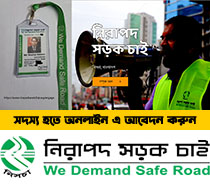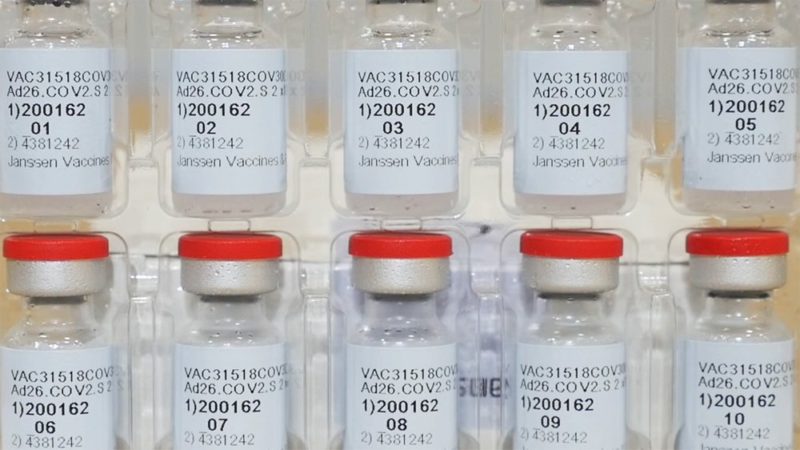Johnson & Johnson’s single-dose vaccine offers strong protection against severe COVID-19, according to an analysis released Wednesday by U.S. regulators that sets the stage for a final decision on a new and easier-to-use shot to help tame the pandemic.
The long-anticipated shot could offer the nation a third vaccine option and help speed vaccinations by requiring just one dose instead of two. Food and Drug Administration scientists confirmed that overall the vaccine is about 66% effective at preventing moderate to severe COVID-19, and about 85% effective against the most serious illness. The agency also said J&J’s shot is safe.
The analysis is just one step in the FDA’s evaluation. On Friday, the agency’s independent advisers will debate if the evidence is strong enough to recommend the shot. With that advice, the FDA is expected to make a final decision within days.
The COVID-19 death toll in the U.S. topped 500,000 this week, and the vaccination drive has been slower than hoped, hampered by logistical and weather delays. So far, about 44.5 million Americans have received at least one dose of vaccine made by Pfizer or Moderna, and nearly 20 million of them have received the second dose required for full protection.
Tests showed the Pfizer and Moderna vaccines were 95% effective at protection against symptomatic COVID-19.
Dr. Paul Offit, a vaccine expert at Children’s Hospital of Philadelphia, is part of the FDA advisory panel that will scrutinize the J&J data on Friday and cautions that none of the vaccines have been directly compared. Still, he was encouraged that one dose of the J&J vaccine appears as good at preventing serious illness as its two-dose competitors.
“This is a vaccine to prevent you from going to the hospital and dying at a level that’s certainly comparable” to the Pfizer and Moderna vaccines, he said.
J&J tested its single-dose option in 44,000 adults in the U.S., Latin America and South Africa. Different mutated versions of the virus are circulating in different countries, and the FDA analysis cautioned that it’s not clear how well the vaccine works against each variant. But J&J previously announced that the vaccine worked better in the U.S. — 72% effective against moderate to severe COVID-19, compared with 66% in Latin America and 57% in South Africa.
South Africa recently began giving the J&J vaccine to front-line health workers on a test basis after deciding that a vaccine from rival AstraZeneca had not shown strong enough study results against the particularly concerning variant spreading there.
“I was reassured” that despite different variants, the J&J shot still protected against serious illness, said Dr. Jesse Goodman of Georgetown University, a former FDA vaccine chief. “That’s pretty robust data.”
In case the vaccines eventually need to be updated, manufacturers are working on adjustments to their recipes. Moderna announced Wednesday that it is ready to begin testing experimental doses that better match the South African version of the virus.
Across all countries, the analysis of the J&J vaccine showed protection began to emerge about 14 days after vaccination. But by 28 days after vaccination, there were no hospitalizations or deaths in the vaccinated group compared with 16 hospitalizations and seven deaths in study recipients who received a dummy shot.
The FDA said effectiveness and safety were consistent across racial groups, including Black and Latino participants.
All of the world’s COVID-19 vaccines have been tested differently, making comparisons nearly impossible. It would not be surprising if one dose turned out to be a little weaker than two doses, and policymakers will decide if that’s an acceptable trade-off to get more people vaccinated faster.
J&J has another large study underway to see if a second dose of its vaccine works better, raising the prospect that countries could eventually add a booster if one turned out to be warranted.
Like other COVID-19 vaccines, the main side effects of the J&J shot are pain at the injection site and flu-like fever, fatigue and headache. No study participant experienced the severe allergic reaction, called anaphylaxis, that is a rare risk of some other COVID-19 shots, although one experienced a less serious reaction.
The FDA said there were no serious side effects linked to the vaccine so far, although it recommended further monitoring for blood clots. In the study, those were reported in about 15 vaccine recipients and 10 placebo recipients, not enough of a difference to tell if the vaccine played any role.
J&J was on track to become the world’s first one-dose option until earlier this month. Mexico announced it would use a one-dose version from China’s CanSino, which is made with similar technology as J&J’s shot but initially was developed as a two-dose option until beginning a one-dose test in the fall.
The Pfizer and Moderna vaccines now being used in the U.S. and numerous other countries must be kept frozen, while the J&J shot can last three months in a refrigerator, making it easier to handle. AstraZeneca’s vaccine — widely used in Europe and Britain — is made similarly and also requires refrigeration but takes two doses.
If the FDA clears the J&J shot for U.S. use, it will not boost vaccine supplies significantly right away. Only a few million doses are expected to be ready for shipping in the first week. But J&J told Congress this week that it expected to provide 20 million doses by the end of March and 100 million by summer.
European regulators and the World Health Organization also are considering J&J’s vaccine. Worldwide, the company aims to produce around a billion doses by the end of the year.



